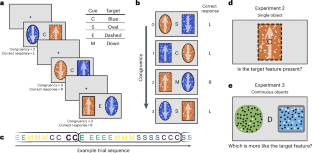2025-02-19 マックス・プランク研究所
<関連情報>
- https://www.mpg.de/24191444/0217-evan-great-apes-show-enhanced-memory-for-social-events-150495-x
- https://www.sciencedirect.com/science/article/pii/S0003347225000089
社会的な注意は、成熟した類人猿の物体記憶を増加させるが、若い類人猿の物体記憶は増加させない Social attention increases object memory in adult but not younger great apes
Marie Padberg, Daniel Hanus, Maleen Thiele, Danyi Wang, Lauren H. Howard, Charlotte Grosse Wiesmann, Luke Maurits, Johanna Eckert, Daniel B.M. Haun
Animal Behaviour Available online: 6 February 2025
DOI:https://doi.org/10.1016/j.anbehav.2025.123081

Highlights
- Adult great apes remembered socially associated objects better (SME).
- This SME disappeared after a 2-day delay.
- Infant and juvenile great apes did not show indication of SME.
- A noninvasive heart rate measure adds information about attention and arousal.
- Social stimuli guide individuals’ attention and foster social learning.
Research across primate species showed that social models (e.g. conspecifics) enhance memory (social memory effect, SME). In this preregistered study, we examined the ontogeny of the SME and its cognitive mechanism in great apes from infancy to adulthood (3 months–47 years), and explored both its persistence after a delay and its interaction with attentional measures of arousal (heart rate, HR). Forty-two individuals from four nonhuman great ape species viewed videos of social (hand) and nonsocial (mechanical claw) models constructing a tower, which was subsequently presented next to a novel tower. After 2 days, we showed the familiarized tower again next to a novel tower. Looking longer at the novel tower was interpreted as processing and recognizing the familiar tower (novelty response, NR). Results showed that adults (only) demonstrated higher NR for the tower built by the hand compared to the tower built by the claw when tested immediately, but not after a 2-day delay. We propose that this memory effect may have been driven by enhanced attention towards the social model, as adults demonstrated decreased HR relative to baseline in the social condition and accelerated HR in the nonsocial condition. However, we found no such differentiation in NR and HR in the younger individuals.


